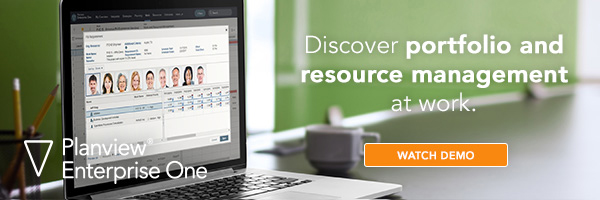
Your organization is transforming. Maybe you’re part of a newly-minted project management office (PMO). Or perhaps you’re a tenured PMO leader and looking to refine your skills. You’re valiant and ready to spearhead the challenges ahead for developing process and governance. But they have given you a butter knife for the proverbial “battle” to slay the fire-breathing dragon.
As a PMO leader, you are responsible for centralizing projects into a single portfolio, establishing governance and processes while prioritizing projects based on strategic objectives—but you do not have the tools necessary to execute the process effectively. And there’s even more complexity…You don’t really manage the people that do the work—you just manage the processes for efficiency and repeatability to get the results your organization needs.
What do you do?
This is a collection of tips to help you advance your skills, mitigate risk, and address challenges head-on to advance your newly created PMO.
Five Characteristics to Cultivate
- Be proactive – See something wrong and look for ways to fix it. Take the initiative to centralize information, standardize processes, and prioritize work. Get all the project and plan information in one place. The need to centralize information into a scalable format will eventually help make the case in the future for a better technology tool.
- Be goal oriented – Create realistic, short-term goals to advance maturity. Focus your efforts on moving your organization from Level One (empowered chaos) to Level Two (organized and consistent). Create a plan to get you there. Once your plan is set, leverage a project management solution to ensure projects and processes are standardized, prioritized, and aligned with the overall business strategy.
- Communicate often – Don’t be reactive in your communications regarding projects. Keep everyone informed by providing visibility to stakeholders, allowing them to make decisions in times of change and stay current on project status. However, remember to consistently appeal to your organization and executive’s reporting and communication needs to ensure people are focused on the right projects.
- Be data smart – Your success now depends on your stakeholders valuing the information you provide. Establish your battle plan and set up the metrics and KPIs that will drive your PMO on the path to deliver the organization’s strategic objectives. Consider what capabilities your project management tool can support and establish which metrics will matter and offer the right views of health, risk, and status back to the business. Examples of KPIs include proper utilization of resources, risk management, budget tracking, and financials.
- Lead by example – You are managing projects that involve your most valued resource—humans. Team member adoption is a make-or-break for success. Executive buy-in is usually a given. But getting the buy-in of those who actually “do” the work (who don’t always see the value in standardization) can be tricky. Help them understand why their work is significant to the project, make their required to-dos easier to manage and execute, and celebrate their contributions.
To learn more about how project portfolio management can help you be a successful PMO leader, check out the workshop series on how you can enable your PMO at hyper-speed.






